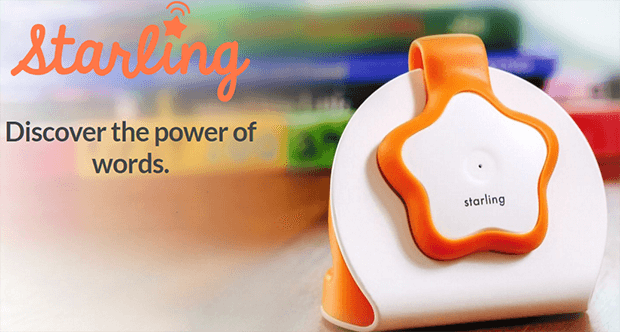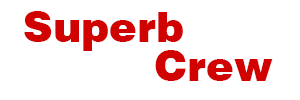VersaMe is building tools to improve child development during their early childhood. The company recently introduced its flagship product, the Starling. The Starling is the first independent, real-time word counting device as well as the world’s first wearable education device for children. Paired with a smartphone, parents, teachers, and guardians can get feedback and encouragement for greater child engagement. Below is our interview with Nicola Boyd, Co-Founder of VersaMe:

Q: Nicola, please introduce yourself and your startup?
A: I am a 30-something-year-old Brit who, having spent 10 years building a successful finance career in London, packed my bags to do a Masters at Stanford and upon graduating last year founded VersaMe.
Q: What inspired you to create VersaMe? What problem does it solve or address?
A: While at Stanford, I met my cofounders, a pair of serial entrepreneur brothers who served with the US Army in the Middle East. We shared a passion for innovating in education and founded VersaMe with the mission to transform early childhood education worldwide.
Inspired by research, we are building a wearable device – the Starling – that counts the number of words spoken to babies and children. Studies have conclusively shown that the number of words spoken to a child between ages 0 and 4 is the greatest predictor of success in life. The Starling is the first independent, real-time word counting device as well as the world’s first wearable education device for children. Paired with a smartphone, parents, teachers, and guardians can get feedback and encouragement for greater child engagement.
 Related: Madcap Logic Helps Kids Achieve A New Understanding Of The Visual World Around Them
Related: Madcap Logic Helps Kids Achieve A New Understanding Of The Visual World Around Them
Q: Did you have a chance to try out a prototype with parents? If so, what was their reaction?
A: Users – parents and caregivers – have always been at the center of our design process. The first thing we did was build an MVP (minimum viable product), a word counting app, to test out the concept of monitoring and giving feedback on the words your child hears. We used this ourselves and tested it with family, friends, and some innocent but willing strangers. Feedback quickly confirmed our hypothesis – the data was interesting but the medium was totally impractical. Having a smartphone around a child is an invitation for distraction, both for the child and the parent! That confirmed our hypothesis that we needed to build a standalone device, the Starling.
At every step along the way, we have tested the Starling with users and are now running Beta tests in cohorts of 20-30 families at a time. Happily, feedback on the idea has ranged from positive to obsessive! Feedback on the implementation has been more critical as expected and needed, but all very constructive. This has definitely given us the confidence to keep going at times.
Q: How did you create your prototype? What solutions did you use? Were there any obstacles?
A: Resourcefulness is key! The first hardware prototype (photo below) was thrown together and involved a pen lid.
Fro there, we got more sophisticated and created a number of 3D-printed prototypes. Version one is modeled below by my co-founder’s daughter Isabella with the companion app displayed in the foreground.
Through testing prototypes, we learnt an enormous amount, both technically and from a usability standpoint. Including but not limited to what size/ shape works, what best attaches to a child, how background noise affects counting, why speakers have multiple holes, why the device needs to be waterproof….
 Related: Startup Monkimun – Makes Language Learning For Kids Fun
Related: Startup Monkimun – Makes Language Learning For Kids Fun
Q: How has your journey towards mass manufacturing been so far? What challenges are you facing?
A: I had been warned that hardware was not for the faint hearted and that is definitely true! Our awesome hardware lead Alvin is very experienced with bringing hardware ideas to life and has plenty of scars from the journey. We also have a local ME partner who have been invaluable in holding our hand through the manufacturing process. Finally, I am lucky enough to be part of a handful of Silicon Valley communities – Stanford, StartX, YC Female Founders – so always have a trusted group to go to for any questions.
Despite all that, we have had plenty of “bumps” on the road to date – circuit interference leaving first run of boards unusable, needing a battery out of production amongst others – and I anticipate more to come as we move from engineering through production builds.
Q: What do you think will be the biggest obstacles to getting your product to the mass market?
A: We are creating a new product category and while that sounds great, it presents a number of challenges. There are sufficient numbers who immediately “get it” and they will be our early evangelists, but we anticipate it will take time and refinement of our content and messaging before the Starling has mass market uptake.
The other obstacle is pricing. Feedback has been that to reach mass market, pricing needs to be below $100 and with our initial low volume runs, even if we wanted to we couldn’t sell at that pricepoint.
 Related: Growbacon – Teach Your Kids About Investments, Savings and Loans
Related: Growbacon – Teach Your Kids About Investments, Savings and Loans
Q: What are the takeaways and lessons learned from working on this project that you’d like to share with other hardware startups?
A: Hardware is hard!
It will take longer and cost more than you think to develop so bear that in mind before you start. The flipside is that that will put others off and you create barriers to entry for potential competitors. So do it, just make sure you really believe in what you are creating.
Surround yourself with others who have been through or are going through the hardware product development process. Learn from the mistakes of others wherever possible.
Q: What are your ‘go-to’ sources for tech information and news? (Do you have any recommendations for a must-read/watch/listen article, book, blog, film, or podcast, etc.?)
A: A list far too long to cover here…. TechCrunch for general startup news, Product Hunt to see whats hot, HWTrek for all things hardware, blog from Ben Einstein at Bolt, hardware advice and vendor information from PRG, Eric Reiss’s Lean Startup, Strategyzer’s Business Model Canvas….
Perhaps most important though are the in person communities that I’m a member of – Stanford’s Venture Studio, our Spring 15 StartX cohort and the YC Female Founders Group.
Activate Social Media:


